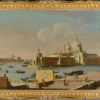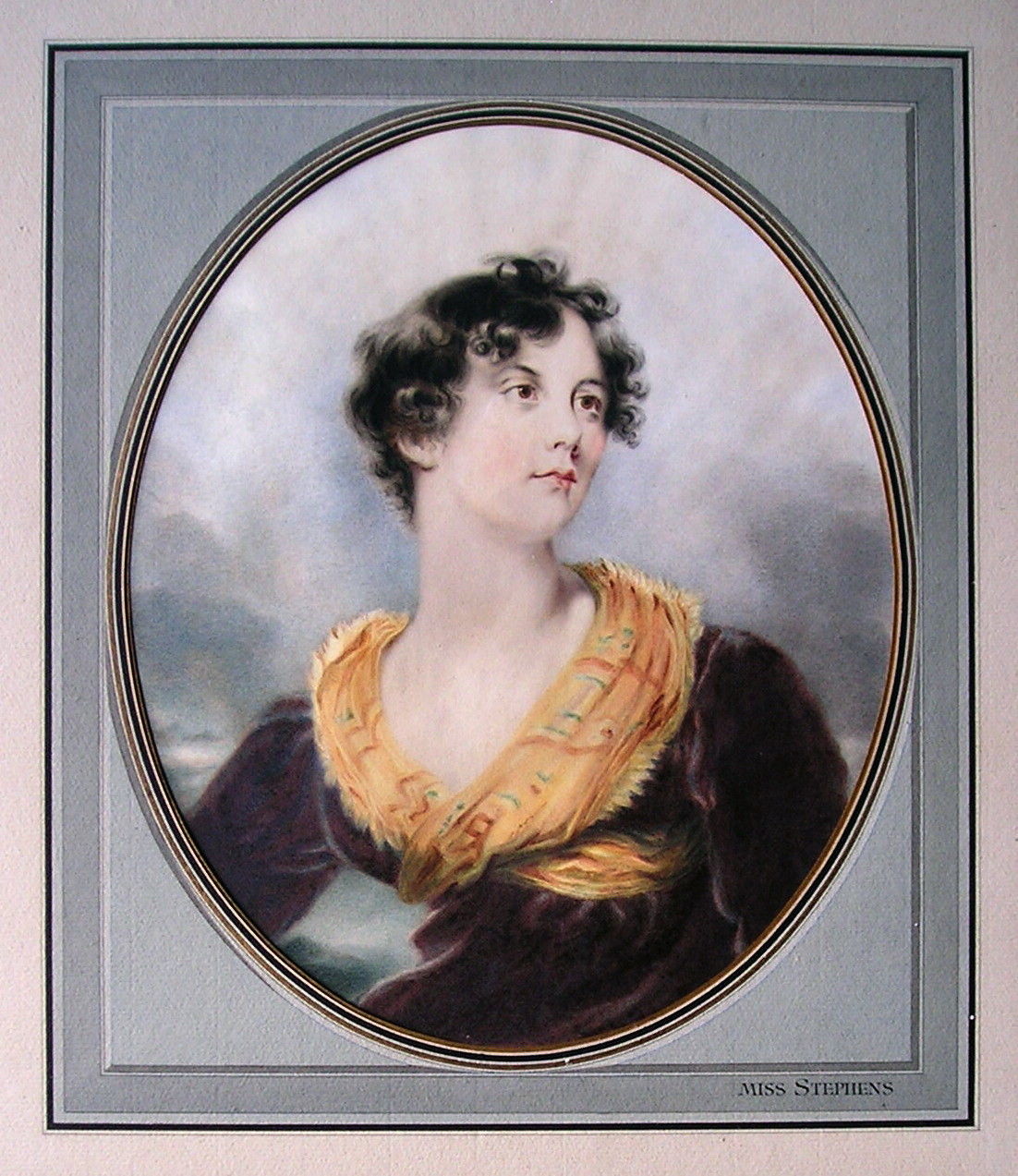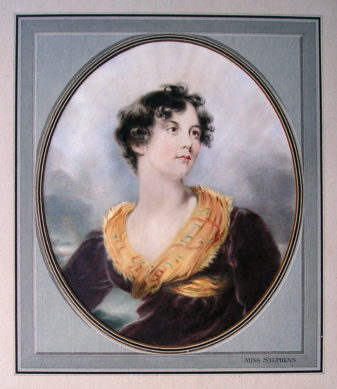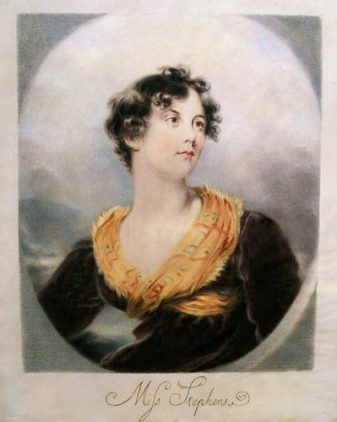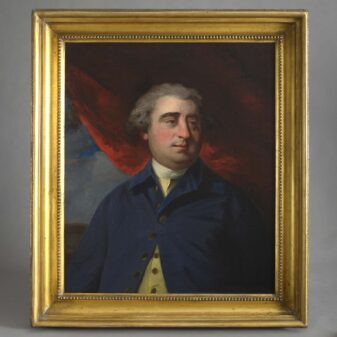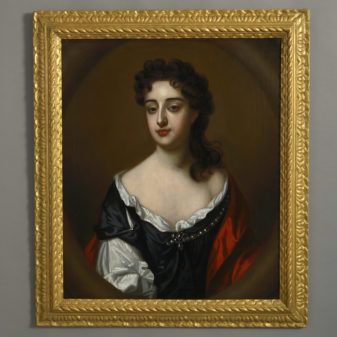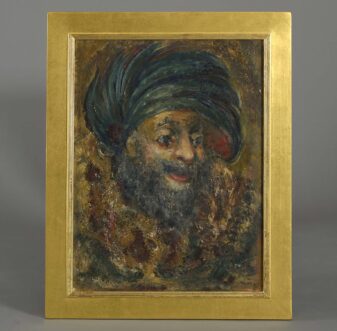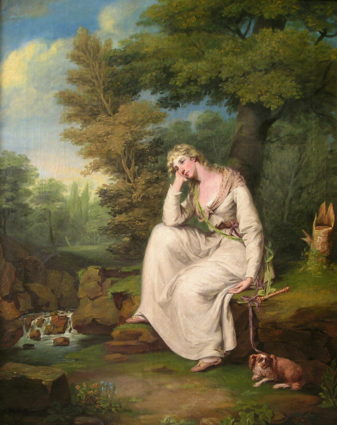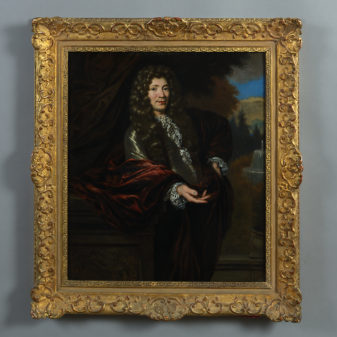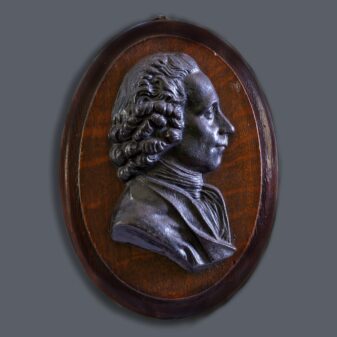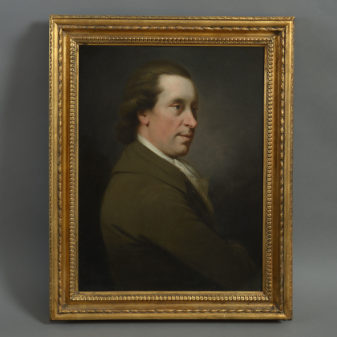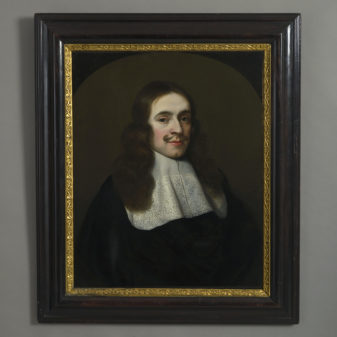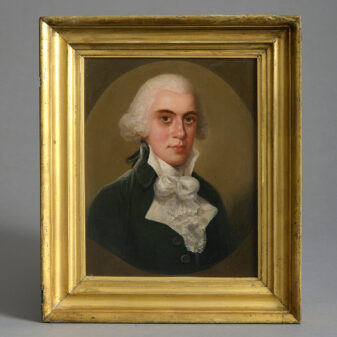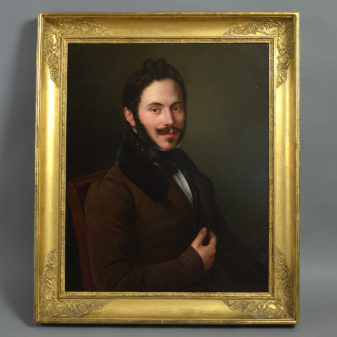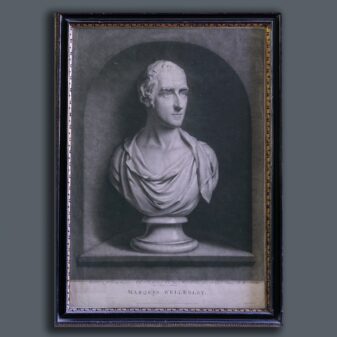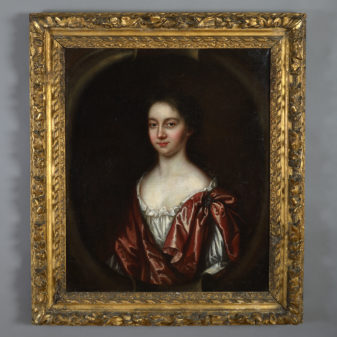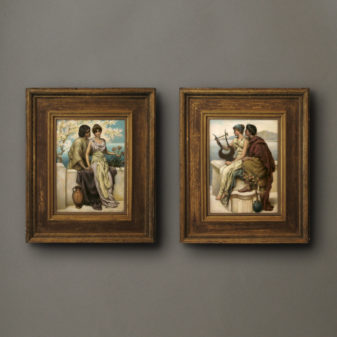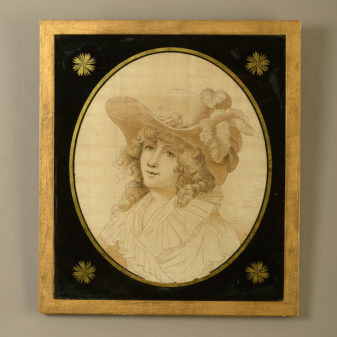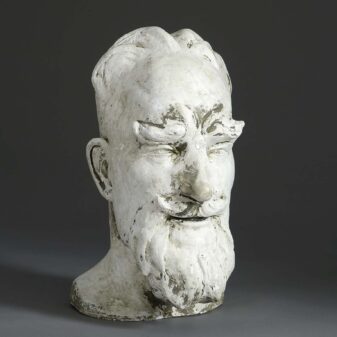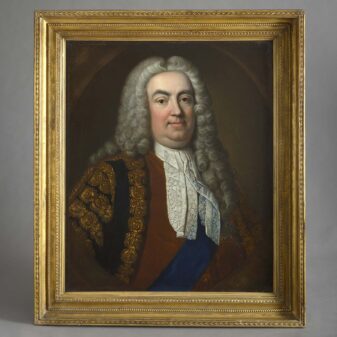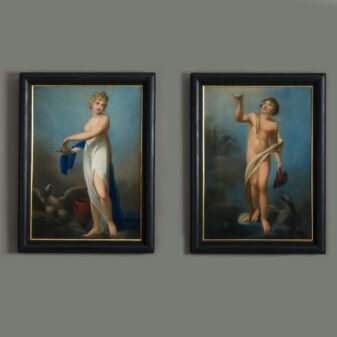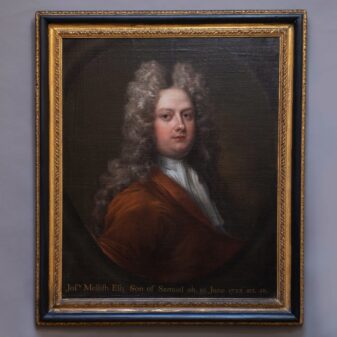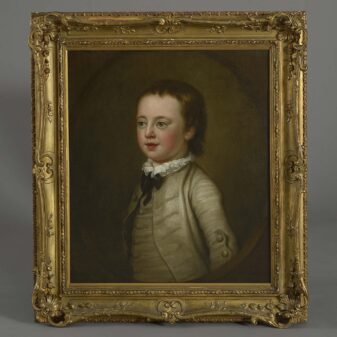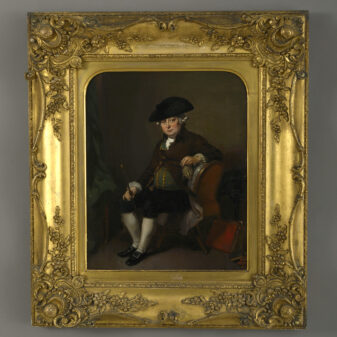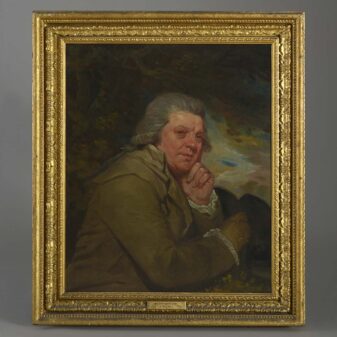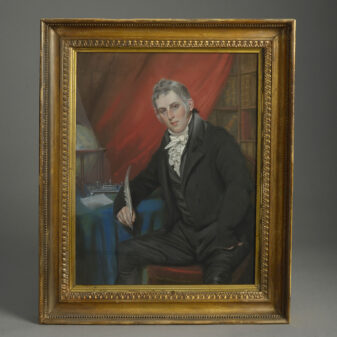Subtotal: £12,900
Attributed George Henry Harlow, Catherine ‘Kitty’ Stephens, later Countess of Essex
£1,250
SOLD
Watercolour and pencil on paper; 14 by 11 in; 35.5 x 27.5 cm; held in a gilt wood period frame with decorative card mount
Provenance: Private Collection, Ireland
Catherine Stephens was an English soprano and actress, and daughter of Edward Stephens, carver/gilder, of Grosvenor Square, London and caused a society scandal when she became the Countess of Essex in 1838.
In 1807 she began to study singing with Gesualdo Lanza under whose care she appeared in various provincial towns. After 1822 she took small parts with an Italian opera company at the Pantheon in London and later that year studied with Thomas Welsh. On 23 September 1813 she made a successful debut at Covent Garden as Mandane in Arne’s Artaxerxes, and continued to sing there until 1822 when she transferred to Drury lane and the English opera house. She did return to Covent Garden in 1828, as well as touring the British Isles.
Stephens had a penchant for singing Mozart and often selected numbers from his operas as concert pieces as well as singing Zerlinda and Susanna in the first English adaptations held at Covent Garden of `Don Giovanni’ in 1817 and `Le Nozze de Figaro’ in 1819. Her reputation throughout her career was one of purity and chastity though both Lord Milton and the Duke of Devonshire were said to have been amongst her suitors. In 1835 she retired from the stage having amassed a considerable fortune. She caused a society scandal when in April 1838 she married the recently widowed Earl of Essex in his London house in Belqrave Square, where she continued to live for the rest of her life. The Earl died a year after the marriage.
This portrait has long thought to be the sketch used for the mezzotint engraved by William Say and published by Edward Orme in 1816, though Harlow is not known to have worked in watercolour and his sketches are often signed. That said, Harlow depicted Stephens several times – due to her popularity the desire for new images of the singer was great – therefore it is possible that for quickness he completed this watercolour with the intention of immediate transition to an engraved plate and therefore did not sign it.
George Henry Harlow began his artistic career under the instruction of Sir Thomas Lawrence, president of the Royal Academy and the leading portraitist of the time. During his two-year apprenticeship, Harlow copied the works of his master, instilling a rich knowledge of portraiture upon the young artist in the style of his teacher –romantic, polished, and theatrical. Upon an introduction from Lawrence, Harlow began to exhibit at the Royal Academy in 1804, and went on to produce portraits of notable figures from actors and fellow artists to the Prince of Wales, the future George IV, which were recognized for their excellence across various media, including oil, chalk, pencil, and crayon.

 Attributed to Samuel Lane (1780-1859) - Portrait of a Lady
Attributed to Samuel Lane (1780-1859) - Portrait of a Lady  After Thomas Hudson - Portrait of The Duke of Cumberland
After Thomas Hudson - Portrait of The Duke of Cumberland 